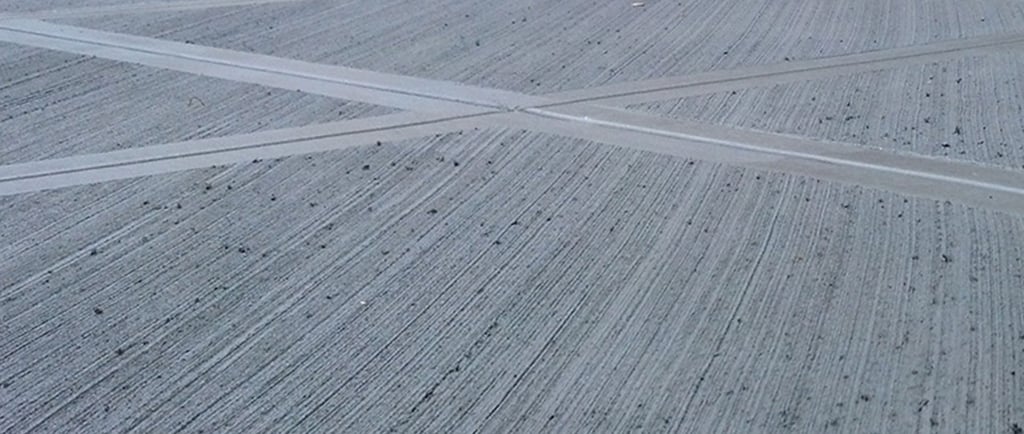Granolithic vs. Broom Finish: Which is Best for High-Traffic Areas?
2/25/20254 min read


Understanding Granolithic Finish
Granolithic finish is a type of flooring that consists of a blend of cement, aggregates, and color pigments that are finely crushed to create a seamless surface. This durable material is combined with finely graded sand and special additives, resulting in a smooth finish that is not only aesthetically pleasing but also remarkably tough. Granolithic surfaces are renowned for their ability to withstand significant wear and tear, making them an optimal choice for high-traffic areas such as warehouses, factories, and parking garages.
The unique characteristics of granolithic finish contribute to its popularity in industrial settings. One of the most notable benefits is its exceptional resistance to abrasion and impact, which is crucial in environments exposed to heavy machinery and foot traffic. This flooring type excels where traditional surfaces may fail, providing longevity and reliability. Additionally, granolithic finishes can be customized with various textures and colors, allowing for versatility in design while maintaining functionality.
Another important feature of granolithic finish is its ability to prevent moisture penetration. This quality makes it particularly suitable for areas prone to spills or exposure to wet conditions. Furthermore, the low maintenance requirements of granolithic flooring make it appealing for facility managers, as it can be easily cleaned and maintained without extensive effort.
In summary, the combination of durability, versatility, and ease of maintenance makes granolithic finish an excellent choice for demanding environments. Its ability to withstand heavy foot and vehicle traffic further solidifies its standing as a preferred material in various commercial and industrial applications. Understanding these characteristics will better inform decisions when selecting flooring solutions for high-traffic areas.
Understanding Broom Finish
Broom finish, a popular surface treatment for concrete, is characterized by a textured appearance created by dragging a broom across the fresh concrete before it sets. This straightforward process begins after the concrete has been poured and leveled. While the surface is still wet, a broom with bristles is drawn across the concrete in one direction, creating fine grooves that enhance traction. This technique not only contributes to the aesthetic appeal of the concrete but also fulfills an essential functional role in high-traffic areas.
The primary components of broom finish include the concrete mix itself and the method employed in the finishing process. The concrete typically comprises cement, aggregates, and water, ensuring that it has adequate strength to withstand heavy use. Broom finishing adheres to the principle of improving safety by creating a slip-resistant surface. This feature is particularly critical for places such as driveways and walkways, where pedestrians might encounter wet or icy conditions. The textured surface reduces the likelihood of slips and falls, providing a safer environment for individuals in these high-traffic zones.
In addition to slip resistance, broom finish offers other benefits, including improved wear resistance and the ability to hide surface imperfections. Unlike smooth finishes, which can become slippery and hazardous when wet, the grooves and textures of a broom-finished surface allow water to disperse more effectively, maintaining traction. This unique feature makes broom finish a compelling choice for areas that experience a lot of foot traffic or vehicle movement. Overall, broom finish combines functionality with visual appeal, earning its reputation as a sensible option for various outdoor applications.
Comparing Durability and Maintenance
When selecting a finish for high-traffic areas, understanding the durability and maintenance requirements is paramount. Both granolithic and broom finishes possess distinctive properties that can significantly influence their performance under heavy use. Granolithic finishes, known for their high compressive strength, excel in durability. Comprising a mixture of cement, aggregates, and a variety of additives, these surfaces are resistant to wear and tear, making them suitable for environments that endure rigorous foot and vehicle traffic. Furthermore, the bonded surface layer of granolithic finish offers enhanced protection against stains and moisture, ensuring longevity.
On the other hand, broom finishes, characterized by their textured surface achieved through a brooming technique, present a more cost-effective option. While they deliver decent use and can withstand moderate traffic, their durability is not on par with granolithic finishes. The exposed surface of a broom finish is more susceptible to damage from heavy loads and excessive wear, which may lead to the need for repairs or resurfacing over time. It is essential for facility managers and property owners to consider these aspects, especially in areas where substantial footfall is expected.
In terms of maintenance, granolithic surfaces require minimal upkeep, usually necessitating routine cleaning to remove dirt and debris. Periodic resealing may enhance their protective qualities, but overall, the maintenance burden remains low. Conversely, broom finishes demand more frequent maintenance, as their textured nature can harbor dirt and grime. Regular cleaning is essential to preserve their aesthetic appeal and functional integrity. Overall, while granolithic finishes provide superior durability and ease of maintenance, broom finishes can still serve well in lower traffic areas where cost is a priority. Understanding these factors will aid in making informed decisions tailored to specific traffic levels and usage scenarios.
Making the Right Choice for Your Project
Choosing between granolithic and broom finishes for high-traffic areas necessitates careful consideration of various factors that align with the specific needs of your project. Both options have distinct advantages and potential limitations, so understanding these can help in making an informed decision.
One crucial factor to consider is the environmental conditions of the space. Granolithic finishes are known for their exceptional durability and resistance to weather elements, making them suitable for outdoor applications. They perform well in areas subjected to harsh conditions, including heavy rain or extreme temperatures. On the other hand, a broom finish may offer a sufficient solution for covered areas where exposure to direct weather is limited but might not endure as well in severe environments.
Another consideration is the type of traffic expected. If the area will experience pedestrian traffic, a broom finish, with its slip-resistant texture, may be advantageous for safety. Conversely, if vehicles are using the surface, granolithic finishes provide superior strength, ensuring longevity under heavy loads. Understanding the expected load and frequency of use is essential to choosing the right finish for your project.
Budget constraints also play a significant role in the decision-making process. Granolithic finishes typically require a higher initial investment, driven by the materials and installation techniques involved. However, their long-term durability often justifies the upfront costs, reducing the need for repairs or replacements over time. Broom finishes, while typically more affordable, may necessitate more frequent maintenance or replacement in high-traffic scenarios.
Finally, aesthetic preferences should not be overlooked. Both finishes offer various styles, colors, and textures that can complement the overall design of the space. Evaluating these options will ensure the selected finish aligns with the visual goals of the project.
By weighing these considerations holistically, you can make a choice that not only meets functional requirements but also enhances the project's aesthetic appeal and long-term value.
